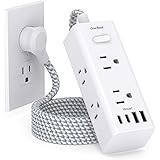Unlock the Hidden Power Moves Between Risk Tolerance and Risk Capacity That Most Investors Overlook—Are You Ready to Pull the Right Lever?
Ever wonder why some folks dive headfirst into real estate investing thinking it’s just about scoring the next big return… only to end up stressing over every market dip and surprise expense? Here’s the kicker: investing isn’t just a numbers game — it’s about knowing exactly how much risk your gut and your wallet can truly handle without sending you into a tailspin. Too many investors confuse feeling comfortable with risk and actually having the financial muscle to absorb it—and that mix-up can cost you dearly. So, let’s chart a Risk Alignment Map that lays it all bare—helping you uncover your unique risk profile and craft an investment strategy that fits like a glove, whether you’re juggling rental properties, diving into syndications, or both. Ready to get savvy about risk and finally invest with confidence and control? LEARN MORE
Real estate investing isn’t just about chasing returns. It’s about understanding how much risk you can truly handle.
So let’s lay out a Risk Alignment Map for identifying your personal risk profile and building a real estate investing strategy that aligns with both your mindset and your money, no matter whether you’re managing rentals, exploring syndications, or doing both.
Why It Matters
One of the biggest, most expensive mistakes I see investors make is confusing their comfort with risk (tolerance) with their ability to absorb risk (capacity). Even seasoned investors can find themselves on shaky financial footing if they don’t align their investments with their actual risk capacity.
Let’s clarify the difference:
- Risk tolerance: Your psychological ability to accept investment volatility or loss. It’s influenced by a range of factors, including your personality, past investment experience, emotional responses to market swings, life stage, and overall comfort with uncertainty—perhaps even what generation you were born into. For example, younger investors with long-term time horizons and growth-oriented goals might feel more comfortable with higher volatility, whereas someone nearing retirement might prefer safer, more predictable returns.
- Risk capacity: Your financial ability to absorb loss without disrupting your lifestyle or goals. This is grounded in objective metrics such as your income stability, total assets, liabilities, liquidity, dependents, and overall financial obligations. It answers the question: How much can you actually afford to lose without compromising your future plans?
These two often get conflated—and the consequences can be costly.
Understanding both sides of this risk equation is crucial. Misalignment leads to overexposure, panic selling, or the inability to recover from losses. Alignment builds portfolios that are durable, sustainable, and growth-oriented.
How to Determine Your Risk Plan
1. Start with stability: Build your reserve and liquidity base
Before you deploy a dollar, build six to 12 months of reserves in cash or cash-like assets. Here are some potential venues:
- High-yield savings accounts (HYSA)
- Money market accounts
- Certificates of deposit (CDs)
- Cash value life insurance
These reserves increase your risk capacity—your ability to absorb financial shocks without derailing your goals.
Pro tip: The closer you are to retirement, the more important it is to increase reserves closer to 12 to 24 months and shift your portfolio toward predictable cash flow investments. This protects against the sequence of return risk—the risk of withdrawing from volatile investments during a market downturn.
2. Define and align risk tolerance vs. risk capacity
Risk tolerance isn’t just a gut feeling; it’s shaped by a mix of psychological, experiential, and situational factors. Key elements that influence an investor’s risk tolerance include:
- Investment objectives: Your goals—whether income, growth, or preservation—affect your comfort with risk.
- Time horizon: The longer your timeline, the more volatility you can generally withstand.
- Life stage and age: Younger investors tend to tolerate more risk; older investors may prioritize preservation.
- Experience and education: Confidence increases with familiarity; beginners often misjudge risk due to lack of exposure.
- Emotional response to loss: Some investors panic during downturns, while others manage to stay calm. Understanding your own bias here is crucial.
Overlay these factors with your actual risk capacity:
- Income stability and sources: How steady and diversified is your income?
- Assets and liabilities: What you own versus what you owe
- Liquidity and access to cash: Can you get to your money quickly?
- Dependents and ongoing obligations: Who relies on you financially? What financial obligations do you have in the next five to seven years?
When you align your defined risk tolerance with your actual risk capacity, you can make smarter, more resilient decisions.
3. Solve the risk alignment equation
Let’s bring this to life with a real-world example.
Investor A invested $100K into a value-add multifamily deal—10% of their total net worth. For two years, they received solid cash flow. But in year three, expenses spiked, and a natural disaster stalled operations. Distributions paused, the project became capital-constrained, and a sale was delayed. That $100K was locked up and at risk.
But here’s the key: Investor A’s risk tolerance said they were fine investing $100K. Their risk capacity, however, indicated they shouldn’t exceed $50K in any one deal (5% of net worth). Had they honored that threshold, the situation would’ve been stressful, but not destabilizing.
Bottom line: Your real estate portfolio should be designed at the intersection of what you can handle emotionally and what you can afford financially. This is where most investors go wrong: They invest based on confidence, not capacity.
The result? Unnecessary stress, impaired liquidity, and lost momentum (this is what I focus my client work on: how to uncover misalignments, reduce stress, and pivot into smarter, cash flow-aligned strategies).
To help prevent this, use the Risk Alignment Matrix—a simple tool to categorize your current risk posture:
| Risk Tolerance | Risk Capacity | Investor Profile |
| High | High | Growth-oriented strategist |
| High | Low | Growth-oriented optimist (highest potential for misalignment) |
| Low | High | Conservative builder |
| Low | Low | Builder, rebuilder, or stabilizer |
Ask yourself:
- Which quadrant are you currently in?
- Is your portfolio aligned or stretched?
- What changes can you make to reduce misalignment?
Let’s now explore how to turn this awareness into action and build an aligned investment structure. Then, use a tiered model to structure your investment mix.
4. Build and maintain your investment structure
Once your reserves are set and your risk profile is clear, the next step is to intentionally deploy capital. Use this tiered structure to allocate across risk-adjusted asset classes and revisit it as your circumstances evolve:
Tier 1: Predictable cash flow investments
- Secured notes
- First-position debt funds
- If you have more time and risk capacity:
- Secured second-position or promissory notes
- Dividend-producing equities
Tier 2: Personally owned assets
- Real estate assets you control directly (single-family rentals, short-term rentals, etc.)
- If you have more time and risk capacity:
- Private businesses
Tier 3: Growth-focused assets
- Common equity in syndications
- Public stocks and bonds
- High-upside, longer-hold assets
Start conservatively. As your investing confidence and capacity grow, you can shift toward more growth-focused opportunities.
Final Thoughts
You now understand the difference between risk tolerance and risk capacity—and why alignment between the two is critical. You’ve seen how missteps can create unnecessary stress, stall progress, and put your wealth at risk. And you’ve been given a clear framework to start evaluating your investments through a smarter lens.
But knowing what to do and doing it consistently are two different things. Most investors struggle here, not because they’re inexperienced, but because they lack a clear system, ongoing accountability, and objective feedback.
Your Risk Alignment Map isn’t a one-and-done. It should evolve as your goals shift, your portfolio grows, and market conditions change. That means:
- Reviewing your reserves
- Rebalancing your allocations
- Avoiding overexposure
- Tracking your performance and progress
If you’re ready to get proactive and take control of your plan, I can help. DM me directly, and let’s build your risk-aligned strategy, so your next investment is the right one.


















Post Comment